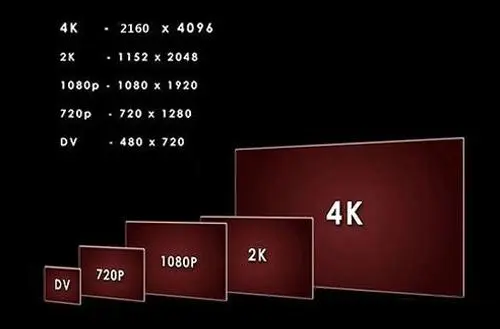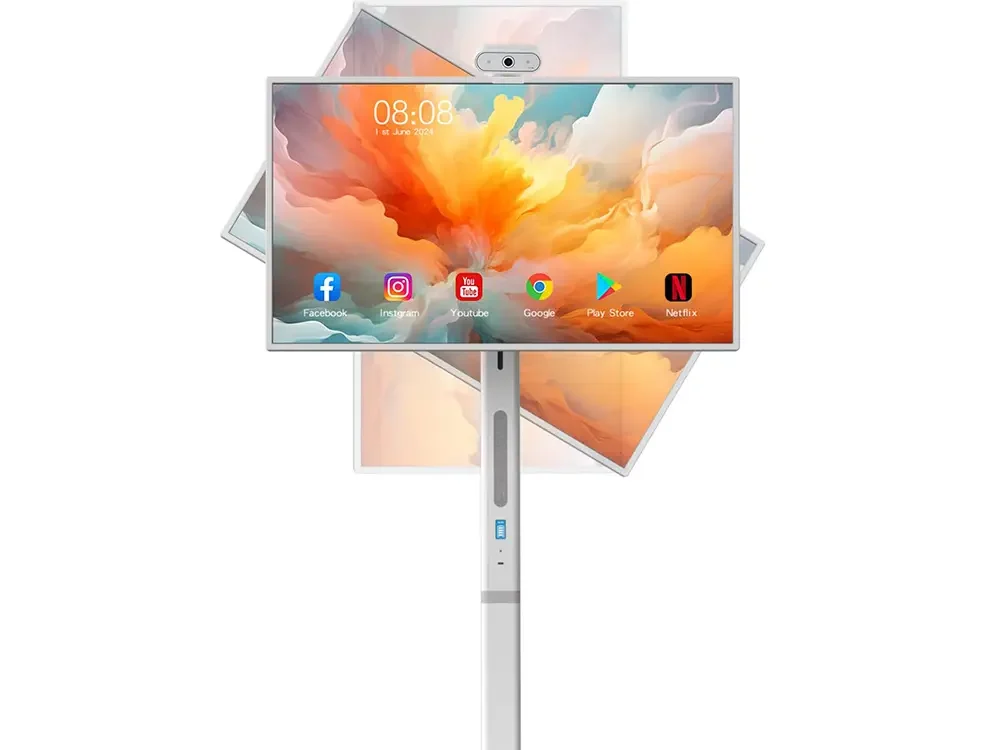As technology continues to evolve at a rapid pace, portable displays, such as the wireless rollable TV tablet, are poised to revolutionize industries ranging from healthcare and life sciences to entertainment and education. While current models offer impressive flexibility and mobility, the future promises even more advanced features, including higher resolution, smarter connectivity, and innovative integration with a variety of devices. This article explores the upcoming trends in the development of wireless rollable TV tablets, predicting how they will shape industries and improve daily life.
The Future of Resolution: Beyond 4K and Into 8K
In the realm of portable displays, higher resolution is the most obvious area for innovation. While many wireless rollable TV tablets currently offer 1080p or 4K resolution, the future of these devices will likely see the adoption of 8K resolution, or even higher. This leap will offer users unprecedented clarity and detail, making it ideal for industries that require precise visual data, such as medical imaging, graphic design, and scientific research.
For instance, in healthcare, doctors reviewing MRI scans or complex genetic data will benefit from the ultra-high resolution, ensuring they can make accurate diagnoses without any visual limitations. Similarly, in creative fields like film production or digital art, professionals will be able to view and edit their work with finer detail than ever before, allowing for more nuanced and high-quality output.

Next-Generation Connectivity: 5G, Wi-Fi 6, and Beyond
The future of wireless rollable TV tablets is not just about the screen’s resolution—it’s also about connectivity. With the rise of 5G networks and Wi-Fi 6 technology, these devices will become more responsive, offering faster data transfer speeds, lower latency, and more stable connections. This is a game-changer for industries where real-time data access is essential.
In the healthcare sector, for example, real-time monitoring and data sharing will become seamless. A doctor could be conducting a live telehealth session while simultaneously receiving and analyzing diagnostic data from a patient wearing a medical device, all in real-time, thanks to 5G connectivity. Additionally, researchers in remote locations will be able to upload and download large datasets instantly, which is critical for fields like environmental science or epidemiology.
Moreover, the evolution of wireless display standards, such as Miracast, AirPlay, and Google Cast, will lead to even more intuitive connections between wireless rollable TV tablets and other devices. These advancements will eliminate the need for cables entirely, further enhancing portability and convenience in both professional and personal settings.
The Future of Rollable Screens: Thinner, Lighter, and More Durable
One of the most exciting areas of development for wireless rollable TV tablets is the improvement of screen technology itself. Future iterations of these devices will likely feature thinner, lighter screens that are even more durable than current models. Innovations in materials like graphene and foldable glass will allow manufacturers to create rollable displays that are not only more portable but also more resistant to wear and tear.
For industries like healthcare, where devices are used in fast-paced, high-stress environments, durability is critical. A wireless rollable TV tablet that can withstand frequent use, drops, and spills will be indispensable for doctors and nurses who need reliable, portable devices during their rounds. In more rugged environments, such as field research or outdoor education, these advancements will also ensure that professionals can rely on their rollable displays without fear of damaging them.
Expanded Integration with Smart Devices and IoT
As the Internet of Things (IoT) continues to grow, wireless rollable TV tablets will increasingly integrate with other smart devices, creating a seamless ecosystem for users. Future tablets will be able to connect with everything from wearable medical devices to smart home systems, allowing users to control a wide range of technologies from a single portable screen.
In healthcare, this means that doctors will be able to monitor patients’ vital signs remotely, integrating data from wearable sensors into the tablet’s display in real-time. For home users, this might mean controlling lighting, heating, and security systems, all through their wireless rollable TV tablet. The integration of voice-controlled AI assistants, like Siri or Alexa, will also make these tablets even more intuitive to use, allowing users to manage tasks with simple voice commands.
Future Power Solutions: Longer Battery Life and Faster Charging
One of the current limitations of wireless rollable TV tablets is battery life, especially for models with larger, higher-resolution displays. However, future innovations in battery technology will address this issue, making these devices more practical for long-term use. Advanced battery materials, such as solid-state batteries, will not only increase the lifespan of these devices but also allow for faster charging times.
For professionals working in fields like healthcare or research, longer battery life means they can rely on their wireless rollable TV tablet for extended periods without needing to recharge. This is especially important for users working in remote areas or during long shifts. In addition, new wireless charging technologies will enable users to charge their devices on the go, eliminating the need for traditional power outlets and making portable displays even more mobile.

Environmental Considerations: Sustainable and Energy-Efficient Designs
With growing concerns about environmental sustainability, the future of wireless rollable TV tablets will also focus on energy efficiency and eco-friendly designs. Manufacturers are already working on reducing the carbon footprint of these devices by using recycled materials and energy-efficient components. In the future, we can expect to see even more sustainable options, such as solar-powered portable displays and screens that consume less energy without sacrificing performance.
For businesses and organizations with sustainability goals, these developments will allow them to invest in cutting-edge technology while also reducing their environmental impact. This is particularly relevant in industries like healthcare and education, where large numbers of devices are often in use, and energy consumption can be a major concern.
Smart Applications for Daily Use
In addition to revolutionizing industries, wireless rollable TV tablets will have a significant impact on daily life. For the average consumer, these devices will provide a smarter, more flexible way to interact with media, work, and home automation systems. Imagine watching a cooking tutorial in your kitchen, unrolling your wireless rollable TV tablet on the counter for a clear view, or managing multiple household tasks while on the move.
Students will also benefit from this technology. Whether attending online classes or studying with interactive learning tools, the wireless rollable TV tablet will offer a flexible, high-resolution display that adapts to any environment. With advanced connectivity options, students can participate in virtual classrooms, collaborate on group projects, and access educational content seamlessly.

Overcoming Current Challenges: Durability, Connectivity, and Adaptation
While wireless rollable TV tablets hold immense potential, there are challenges that need addressing. For example, durability, especially for rollable screens, is crucial as these devices need to handle wear and tear. Additionally, connectivity in rural or remote areas, where 5G and Wi-Fi 6 may not be fully implemented, poses a challenge. Future iterations will need to account for these issues by integrating more resilient screen materials and alternative connectivity methods, such as satellite internet.
As these obstacles are overcome, wireless rollable TV tablets will become even more valuable tools for users across industries and personal applications.
Conclusion: The Future of Wireless Rollable TV Tablets is Bright
The future of wireless rollable TV tablets is undeniably exciting. With higher resolutions, faster and smarter connectivity, and innovations in screen technology, these devices will continue to revolutionize how we interact with technology in both professional and personal settings. Whether you’re a doctor reviewing patient data, a researcher analyzing genetic sequences, or simply a consumer looking for a better way to watch content and multitask, the wireless rollable TV tablet will offer a glimpse into the future of portable displays—one where technology is smarter, more efficient, and more adaptable to our everyday needs.
